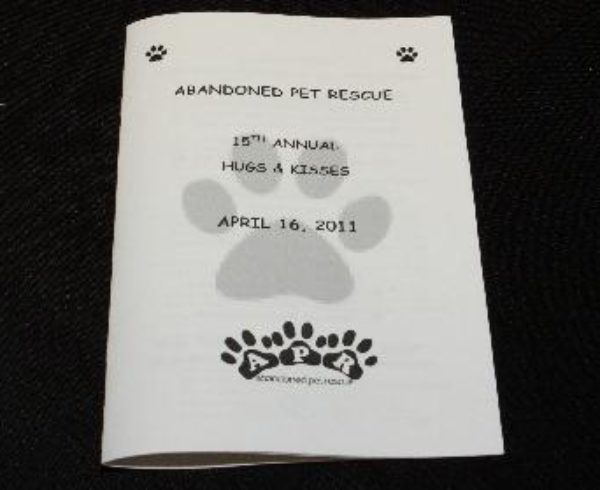As 2022 ends and the promise of 2023 is just on the horizon, what are you thinking about? What goals, aspirations, dreams do you have for yourself, your pets for the new year? If you’re like most people, they include things you want to do, get or places you want to go next year. Maybe you have a health issue you’re dealing with, or your pet does, and your goal or dream is to be well or have them be well.
As a pet health coach, I’m always encouraging, championing pet parents to go beyond the conventional way of thinking about their pets’ health to achieve their dream. Whether it’s introducing them to good nutrition, the foundation of the house of health, or the concept of energy healing, since we and everything around us is made up of energy and every one of our cells are like little batteries, being open to new ideas and thinking outside the conventional box has always opened the door to bigger ideas, more options, and better solutions. Being curious and open is behind every great invention.
The photo of my pack in 2016 above is a case in point. Had I known more back then, perhaps my beloved little Chihuahua man, Albie (in Christmas hat), might still be with me. Optic neuritis took him; an autoimmune dis-ease that vets can’t yet diagnose, and one where it eats away the optic nerves and then the brain. It’s heartbreaking to see, and something I want to help pet parents avoid in their families.
So, in honor of the new year and new beginnings, I’m going to share my top 5 ways for your fur babies to be healthier so you can enjoy more time with them. Feel free to reach out and ask any questions you have. I would be honored to help you understand more about any of these suggestions.
You might be amazed to learn that the body is such a precise electrical and energy frequency system, it can send our blood through hundreds of miles of passageway every 33 seconds. Our pets are no different in how precise and incredible a body they have, to function and heal.
So, how do we honor this amazing body we and our pets have been given and allow it to do what God and the Universe has created it to do? That is what I study and what I try to honor in my clients and my own dogs and cats every day.
Sophie’s Story
Before I get into my Top 5 Tips, a little story. My 12 ½ year old dog, Sophie, recently had a digestive upset. Sophie woke me up at 6am anxious and needing to go out quickly and poop. She was stretching out her body and pacing, which is what she does when she gets a digestive upset. In homeopathy, we’d call this a modality – digestive upset, made better by pacing or digestive upset, made better by stretching.
So, we had a few runs outdoors for her bouts of diarrhea, some vomiting, and some shivering. It was a pretty-bad bout; she was looking at me like, Mom, I really don’t feel well.
After giving Sophie a homeopathic remedy that didn’t seem to help after a few doses, some marshmallow root tincture mixed with water to coat her digestive tract and start to heal any inflammation, and some Self Heal, another herb formally called Prunella Vulgaris, which is very good for healing digestive upset, she still was vibrating with anxiety, giving me that look and pacing consistently.
Sophie wasn’t getting better, something I don’t usually experience when she has her periodic digestive upsets. There was one thing I was concerned about. Since she’d had a raw meaty bone the day before, what if her stomach acids, which are at least 10x more concentrated than ours to allow them to break down meat, bone, gristle of whole animals, what they are internally designed to eat; what if a tiny little piece got through and lodged in her intestines, causing a blockage. That is something I don’t want to fool with.
So, on a Saturday afternoon, when any veterinary practices that would’ve been open on a Saturday were now closed, I took her to the ER veterinary services. I may be a natural pet health coach, but there’s a time and a place for the vet and I wasn’t taking any chances.
Prior to leaving, I decided to try her on another homeopathic remedy that also looked promising, based on her symptoms. Sometimes, with homeopathy, especially with animals and human babies, who can’t tell us, you have-to try a couple of well-chosen remedies to get to the right one.
Sophie and mom arrive at the ER and are told it could be a 6-8 hour wait, depending on how many critical care animals they had. While Sophie was stretching out her body compulsively, due to discomfort, her vomiting and diarrhea had stopped, and she was not considered critical care.
We hunkered down and waited, as I continued to dose her with the new remedy, alternating with marshmallow root tincture.
About 2 hours in, something wonderful happened. It seemed the second remedy had started to work in her body.
She stopped shaking and pacing. She laid down and appeared much more relaxed and even started to nod off, tipping over slightly to one side, before catching herself. Don’t you love how people and dogs do that, sometimes, especially when it’s the seniors?
I decided to take her for a little walk around the practice. She seemed very game; Sophie never met an outside adventure she didn’t like. And I noticed that for the 10 minutes we walked around, she didn’t stretch out her body once. Since she was stretching out every couple of seconds before, this was a big sign that she’d turned a corner.
So, I thought to myself, if Sophie has a bone fragment lodged in her intestine, she would not be getting better, she’d be getting worse. The ladies in the practice agreed. And Sophie had marched right over to our car when we were out, and looked at me, as if to say, Mom, enough of this game; can we go home now?
So, that’s exactly what we did. As the late afternoon turned to evening, Sophie’s appetite returned, another good sign. I knew from experience I didn’t want to give her a usual meal. That would be too much for her tum to digest right now. So, I put a few chicken thighs into a pot with some chopped up celery and water and made a chicken bone broth for her, which she, her sister, Ani, and Suki, the cat, all enjoyed. Then, she rested comfortably.

What’s the point of this story? It’s very good to have tools in your kit to heal your pet yourself. It was enormously helpful for Sophie, whose body didn’t have to endure the fall out of Cerenia for nausea or metronidazole for diarrhea, all of which are standard practice for the vet to give when a dog presents with diarrhea, vomiting, an upset tummy. It’s also very good to know when it’s sensible to go to the vet to have something checked out. Many pet parents run to the vet for everything because they don’t know what to do themselves.
So, to bring this back around to the new year and new possibilities, I want to share my tips with you, in the hopes they will help you with additional tools to be more empowered pet parents for your babies.
TIP #1: NUTRITION – Despite the onslaught of clever marketing and vet waiting rooms filled with what essentially is junk food for dogs and cats, be strong! Learn what is really healthy for your dog and cat. Yes, we’ve domesticated them, but what does that really mean? It means they sleep in the house, in our beds, some of us dress them up and we treat them like babies. But their digestive systems haven’t changed very much since they were wolves and big cats. They weren’t being brought to the vet for itchy skin, digestive issues and the like, because those issues are manmade.
What did they eat back then? Whole raw animals. That’s right. The hair, skin, organs, muscle meat, raw meaty bones…all of it. And each part of the animal had important vitamins and minerals so those animals could be healthy and have strong immune systems. That holds true today. A diet consisting of a wide variety of types of meat, a variety of organs and a variety of raw meaty bones solves and resolves a multitude of problems.
The live enzymes in the raw food are a very important part of digesting and assimilating nutrients into the body and anytime you add heat to food, those enzymes are killed. No pre or probiotic or bottled supplement is going to take the place of that.
I know what to feed is overwhelming for a lot of pet parents. There’s a lot of conflicting info out there. I am happy to talk with anyone that has questions. The important thing I think for most pet parents is to know they’re doing the right thing for their animals and there is plenty of science and empirical data around feeding raw to support this.
TIP #2: LEARN TO IDENTIFY WHEN YOU NEED TO GO TO THE VET – there is a simple acronym to be your guide here. How is your pet’s B.E.A.M.? If your pet has an issue, always check their Behavior, Energy, Appetite, Mood. If their B.E.A.M. is good, normal for them, you can treat at home, barring any extenuating circumstances that have happened that lead you to believe a vet should check them out. B.E.A.M. is a great tool, since a very sick pet will be off in some or all of these categories.
TIP #3: LEARN A HEALING MODALITY – While vets have their time and place, they do not have training in preventative medicine nor any meaningful training in nutrition. Whatever little training they received in vet school is sponsored by companies like Hills, so they are indoctrinated at the same time in feeding one of the unhealthiest foods you can feed your animal. While it’s important to go to the vet when truly needed, it is very empowering to know a healing modality you can use at home to treat acute issues that come up, like Sophie’s digestive upset or a bout of UTI initially or an ear infection, etc. If you know homeopathy, you can treat these things yourself with great success. My student, Shari, called me a few months ago. Her dog had a UTI, it was a Saturday night, and her vet was closed until Monday. She had gone over what she’d learned in my course and chosen a remedy and wanted some support. I told her I thought she’d chosen well. So, she started giving her dog the remedy and after just a couple of doses, her dog started improving. By mid-day Sunday, her dog’s symptoms were almost gone and by Monday morning, they were completely gone, her dog was back to normal; no vet visit was needed. Shari had avoided the requisite antibiotic she’d have been given for her dog, which would’ve made her more susceptible to recurring UTI’s and would have decimated her gut microbiome, the key part of the body from which good or poor health originates. The gut microbiome is deeply affected by antibiotic use and can take months even years to recover. Knowing a do no harm method for acute situations is so important and not that difficult to learn.
TIP #4: LEARN WHEN TO SAY NO TO VACCINES – Did you know that the DHPP puppy vaccine for distemper, hepatitis, parainfluenza, and parvovirus provides a lifetime of protection for your pet? Your vet won’t tell you this. Your animal need never get another one! And, considering that vaccinating has caused a host of conditions, illnesses, dis-eases and even death, the least amount of vaccinating we can do, the better.
Rabies is another issue, the fallout of which can be huge for an animal. Rabies vaccines do not need to be given every 1-3 years; the animal’s immunity lasts far longer. Vets pressuring pet parents to re-vaccinate so often is big business. And yes, in most states, it is also the law. You must make a choice about how you want to address this, especially if you take your dog to daycare or a dog park regularly that requires proof of current rabies or are planning on traveling with your animal. There are circumstances where pet parents may choose to re-vaccinate instead of giving up certain things. In those cases, there is a homeopathic remedy that helps to address the state of vaccinosis which vaccines can cause in an animal. Vaccinosis is the toxicity created in an animal’s body from vaccines and the symptoms, conditions, dis-eases that result from that toxicity.
If you choose to avoid re-vaccinating, instead of saying yes to those annual or tri-annual vaccines, opt for a titer test, where your animals’ blood is tested for the level of antibodies present to protect against rabies. As long as the antibody level is .5IU/mL or greater, the animal is protected. This is from the National Institute of Health Pub Med Journal: “The effectiveness of the rabies vaccine is conventionally determined by measuring the serum titer of rabies virus neutralizing antibodies (RVNA). A titer of 0.5 IU/mL or higher indicates an adequate B-cell response and is generally considered to be protective.”
And it is important to be educated about what can happen when you do vaccinate. These are just some of the kinds of reactions pets have had to rabies vaccines, usually one to two months after receiving one:
-
Developing immune-mediated hemolytic anemia (has a 50% fatality rate)
-
Epilepsy
-
Cancer at the injection site
-
Tumors elsewhere or benign tumors changing to malignant ones
-
Chronic IBD
-
Chronic allergic skin/ear dis-ease
-
Hyperactivity/Hypersensitivity
-
Aggression, suspicion, fearfulness
It might be useful to keep a journal of when you vaccinate and when any symptoms, conditions, illnesses appear. If you’re able to do that now from memory and vet records, I would recommend it. Look to see if any symptoms developed 1-3 months after giving your pet a vaccine. It is really interesting what pet parents I work with have discovered after doing that. It is so that important to have a roadmap and knowledge, so you see the 30 thousand foot view, too.
Most vet practices will do titer tests. They charge quite a bit for them, however, reach out to me for less expensive ways to get your pet titer tested and I’m happy to provide.
TIP #5: LEARN EFFECTIVE NATURAL WAYS TO CONTROL FLEAS, TICKS – If you could get mosquitos to stop biting you by drinking pesticide or taking a pesticide pill, would you do it? That is what we’re doing to our animals when giving flea and tick medication every month, oftentimes, year-round. That is what we’re doing when giving heartworm medication. We are feeding them poison and over time, the body is overwhelmed with trying to clear the sheer amount of toxins from the meds, the environment and maybe a poor diet. It becomes a perfect storm of illness and dis-ease.
However, when you build up your pet’s immune system through proper nutrition, using natural healthy ways to discourage insects, your dog or cat won’t attract them, and their immune system will be doing its job protecting the body.
Options to support warding off biting insects include:
-
Organic, raw garlic, finely chopped in their breakfast every day
-
A product call Heartworm Free (HWF) by Amber Naturalz
-
Organic, food-grade Diatomaceous Earth (DE). An added benefit of DE is it will carry heavy metals out of the body and kill parasites.

















